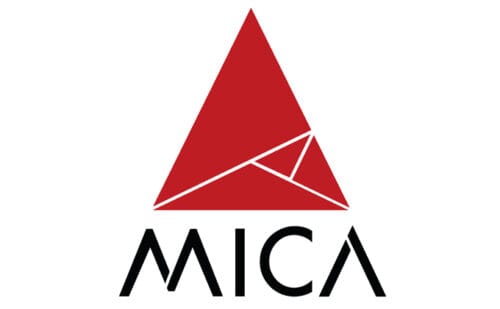CAT vs GMAT: A Comprehensive Comparison of Career Goals, Exam Structure, and Opportunities
In the pursuit of a management career, aspirants often face a critical decision between two of the most prominent entrance exams: the Common Admission Test (CAT) and the Graduate Management Admission Test (GMAT). While both tests serve as gateways to prestigious business schools, they cater to slightly different audiences and career aspirations.
CAT is primarily focused on Indian management institutes, such as the Indian Institutes of Management (IIMs), while GMAT is internationally recognized and is widely accepted by both Indian and global business schools. The decision between CAT and GMAT can be challenging, but it ultimately depends on the candidate’s career goals, preferred location for education, and long-term professional aspirations.
In this article, we will provide an in-depth comparison of CAT and GMAT, examining various factors such as exam structure, difficulty level, preparation strategy, career opportunities, and global vs. domestic scope to help you make the best decision for your future.
Overview of CAT and GMAT
What is CAT?
The Common Admission Test (CAT) is a computer-based exam used for admission to MBA and PGDM programs in India’s top management schools, particularly the IIMs. Over 2 lakh candidates appear for CAT annually, making it one of the most competitive exams for business school admission in India. CAT tests students in areas such as verbal ability, logical reasoning, and quantitative aptitude, with a strong emphasis on analytical and problem-solving skills.
- Conducting Body: IIMs (on a rotational basis)
- Eligibility: Bachelor’s degree with at least 50% marks (45% for reserved categories)
- Mode of Exam: Computer-based (online)
- Structure: CAT consists of three sections:
- Verbal Ability and Reading Comprehension (VARC)
- Data Interpretation and Logical Reasoning (DILR)
- Quantitative Ability (QA)
What is GMAT?
The Graduate Management Admission Test (GMAT) is an internationally recognized exam that is widely accepted for admission to MBA and management programs at global business schools, including those in India, the US, Europe, and other countries. GMAT focuses on assessing a candidate’s reasoning, problem-solving, and analytical writing skills. It is especially popular among students who wish to pursue their MBA from global institutions such as Harvard, Stanford, INSEAD, and London Business School, but it is also accepted by Indian institutes like ISB and some IIMs (for their executive programs).
- Conducting Body: Graduate Management Admission Council (GMAC)
- Eligibility: No specific eligibility criteria; the candidate should have completed a bachelor’s degree for MBA admissions
- Mode of Exam: Computer-based (online)
- Structure: GMAT consists of four sections:
- Analytical Writing Assessment (AWA)
- Integrated Reasoning (IR)
- Quantitative Reasoning (QR)
- Verbal Reasoning (VR)
Key Differences Between CAT and GMAT
| Criteria | CAT | GMAT |
|---|---|---|
| Target Audience | Students aiming for MBA/PGDM in Indian B-schools, particularly IIMs | Students aiming for global business schools or Indian institutions like ISB |
| Geographical Scope | Primarily India-focused | Global, accepted by business schools worldwide |
| Exam Validity | 1 year | 5 years |
| Career Opportunities | Business management, consulting, entrepreneurship (in India) | Business management, consulting, entrepreneurship (global opportunities) |
| Exam Sections | 3 (VARC, DILR, QA) | 4 (AWA, IR, QR, VR) |
| Duration | 2 hours | 3.5 hours |
| Difficulty Level | Moderate to high | Moderate, with focus on reasoning skills |
| Scoring Range | 0-100 percentile | 200-800 |
| Flexibility of Exam | Conducted once a year (fixed date) | Can be taken multiple times a year, up to 5 attempts in 12 months |
| Average Cost | ₹2,400 | $250 (~₹21,000) |
| Preparation Time | 6-12 months | 3-6 months (for a high score) |
Career Opportunities After CAT
CAT is the stepping stone to a successful career in business management, especially in India. Students who clear CAT and gain admission to top institutions such as the IIMs, FMS, or XLRI can expect to be groomed for leadership roles across a wide range of industries.
Some of the career paths commonly pursued by CAT aspirants include:
Consulting: Top consulting firms like McKinsey, Boston Consulting Group (BCG), and Bain recruit heavily from IIMs, offering lucrative salaries and career growth opportunities in strategy consulting.
Finance: Many CAT-qualified MBA graduates work in investment banking, private equity, venture capital, or corporate finance with firms like Goldman Sachs, JP Morgan, and Morgan Stanley.
Marketing and Sales: Large FMCG companies such as Unilever, P&G, and Nestle hire MBA graduates for key marketing roles, where they develop brand strategies, manage product portfolios, and drive sales growth.
Operations Management: Operations and supply chain management are critical for companies in sectors like manufacturing, logistics, and e-commerce. MBA graduates from CAT can secure leadership positions in these areas.
Entrepreneurship: An MBA from an Indian B-school also provides the skills, network, and confidence to start a business. Many CAT-qualified entrepreneurs have built successful startups, contributing to India’s dynamic startup ecosystem.
Career Opportunities After GMAT
GMAT provides access to global career opportunities and is typically pursued by candidates who aspire to work in international markets or at multinational companies. After clearing GMAT, candidates can secure admission to world-renowned business schools like Harvard, Stanford, Wharton, and INSEAD.
Some of the career paths pursued by GMAT aspirants include:
Global Consulting: Top-tier consulting firms like McKinsey, Bain, and Deloitte recruit heavily from global B-schools, offering opportunities to work on international projects.
International Finance: GMAT-qualified candidates can work in international financial hubs like New York, London, or Hong Kong, joining major investment banks or private equity firms.
Tech Management: Tech giants like Google, Microsoft, and Amazon hire MBA graduates from global B-schools for product management, business development, and strategic roles.
Entrepreneurship and Venture Capital: Many GMAT graduates start their own businesses or join venture capital firms that focus on high-growth startups across the globe.
Corporate Leadership: Multinational companies often recruit MBA graduates from top global business schools for leadership development programs, grooming them for senior management roles in various countries.
GMAT’s Global Edge vs. CAT’s Domestic Focus
One of the most notable differences between CAT and GMAT is the geographical scope of the two exams. CAT is primarily targeted at Indian management institutes, with the IIMs being the most sought-after destinations. While some Indian business schools like ISB and a few executive programs accept GMAT scores, CAT’s scope remains largely confined to India.
On the other hand, GMAT is recognized by over 7,000 business programs worldwide, making it the go-to choice for candidates looking to pursue an MBA in North America, Europe, or Asia-Pacific regions. If you aspire to work in international markets, GMAT’s global edge might make it the better option for you.
However, it is important to note that the Indian market for management professionals is growing rapidly, and the IIMs are among the best business schools in the world. Graduating from a top IIM gives you access to both domestic and global career opportunities, especially in consulting, finance, and entrepreneurship.
Which Exam is Harder: CAT or GMAT?
Both CAT and GMAT are competitive exams, but they test different skill sets, and the level of difficulty may vary based on individual strengths.
Difficulty Level of CAT
CAT is known for its high competition and unpredictable nature, especially in sections like Data Interpretation and Logical Reasoning (DILR). Managing time and maintaining accuracy are significant challenges, particularly since the test includes negative marking for wrong answers. The Verbal Ability section in CAT is also considered tough, as it involves complex reading comprehension passages and grammar-based questions.
- Focus of CAT: The test emphasizes speed, problem-solving, and logical reasoning, with a strong focus on Quantitative Aptitude (QA). Many candidates find CAT more challenging due to its time constraints and unpredictable question patterns.
Difficulty Level of GMAT
GMAT, on the other hand, is designed to measure a candidate’s analytical and reasoning abilities, with sections like Integrated Reasoning (IR) and Analytical Writing (AWA) focusing on decision-making and problem-solving. The Verbal Reasoning section in GMAT is generally considered more straightforward than CAT’s, as it emphasizes grammar and critical reasoning rather than complex reading passages.
- Focus of GMAT: The test places more emphasis on logic and reasoning skills, with a consistent pattern and no surprises. While GMAT is not as time-pressured as CAT, achieving a high score still requires thorough preparation, especially in quantitative reasoning and verbal reasoning.
Preparation Strategies for CAT and GMAT
Preparation Strategy for CAT
To excel in CAT, candidates need to focus on building speed, accuracy, and time management. Here’s a preparation strategy that can help:
Quantitative Ability (QA): Strengthen your basics in arithmetic, algebra, geometry, and number systems. Focus on problem-solving techniques and speed calculation methods.
Data Interpretation and Logical Reasoning (DILR): Practice puzzles, graphs, charts, and logical reasoning sets regularly. These sections require intense practice to improve speed and accuracy.
Verbal Ability and Reading Comprehension (VARC): Read diverse topics, improve vocabulary, and practice comprehension skills. Work on critical reasoning questions to tackle this section effectively.
Regular mock tests, coaching classes, and a structured study plan are essential to performing well in CAT.
Preparation Strategy for GMAT
GMAT requires a focus on reasoning, logic, and problem-solving. The test doesn’t have negative marking, but candidates should aim for a high level of accuracy to score well.
Quantitative Reasoning (QR): Practice high-level mathematics, including algebra, geometry, and data sufficiency questions. Accuracy is key.
Verbal Reasoning (VR): Focus on grammar, sentence correction, and critical reasoning. The verbal section is less complex than CAT, but preparation is still vital.
Integrated Reasoning (IR) and Analytical Writing (AWA): Practice analyzing data from graphs and tables, and improve your essay-writing skills for the analytical section.
The flexibility of GMAT allows candidates to take the exam multiple times, giving them the opportunity to improve their scores over time.
Conclusion: Which Exam Should You Choose?
The choice between CAT and GMAT depends largely on your career goals and where you see yourself studying and working in the future.
Choose CAT if your focus is on building a strong management career in India, especially if you want to gain admission to the prestigious IIMs or other top Indian B-schools. CAT opens doors to high-profile careers in consulting, finance, and marketing in the rapidly growing Indian economy.
Choose GMAT if you aspire to pursue an MBA from a global business school and aim for a career in international markets. GMAT is the ideal choice for candidates looking for global career opportunities and flexibility in terms of exam scheduling.
Both exams offer excellent career prospects, but if you want to maximize your chances in the Indian market and secure a top position in leading Indian companies, CAT could be the more rewarding choice in the long run.




